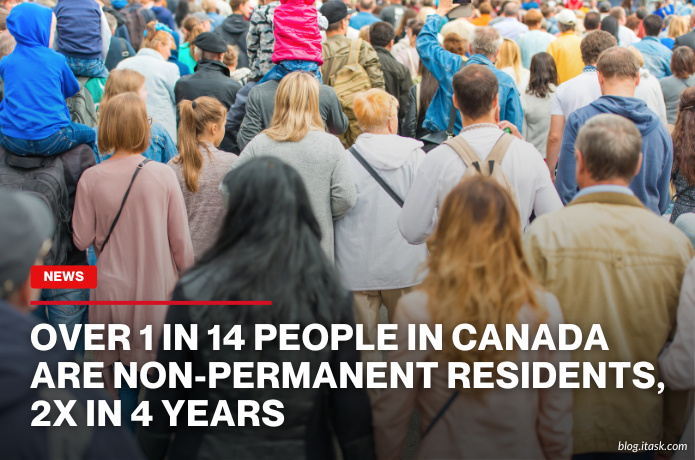Over 1 In 14 People In Canada Are Non-Permanent Residents, 2x In 4 Years
Over 1 In 14 People In Canada Are Non-Permanent Residents, 2x In 4 Years

Canada has experienced a significant increase in its non-permanent resident population over the past four years. As of early 2025, approximately 7.3% of Canada's total population, or roughly 1 in 14 people, are non-permanent residents. This marks a substantial rise from 3.4% in 2021, effectively doubling the share in less than half a decade.
Non-permanent residents include individuals on temporary visas, such as international students and temporary foreign workers. In the last quarter, this group decreased by about 28,300 people, the largest drop since 2020 when border restrictions limited arrivals. Despite this recent decline, the non-permanent resident population remains around 3 million, reflecting a 10.7% increase from the previous year.
The rapid growth in non-permanent residents has significantly impacted Canada's demographic landscape. In 2021, they accounted for approximately 1 in 29 people; by early 2025, this ratio had shifted to 1 in 14. This swift change has led to notable economic and social adjustments nationwide.
In response to these demographic shifts and associated challenges, the Canadian government announced plans to reduce immigration targets. The new strategy aims to admit 395,000 new permanent residents in 2025, decreasing to 380,000 in 2026, and further to 365,000 in 2027. This is a significant reduction from the 485,000 new permanent residents admitted in 2024. Additionally, the number of temporary residents is expected to decrease by 30,000, reaching approximately 300,000 in 2025.
These policy changes are partly driven by concerns over housing affordability and the rising cost of living, which have been linked to the surge in immigration. The government aims to balance the economic benefits of immigration with the need to ensure sustainable growth and maintain public support for newcomers.
While the reduction in immigration targets addresses certain domestic challenges, industry groups have expressed concerns about potential labor shortages and economic impacts. The government acknowledges these concerns and emphasizes the importance of carefully balancing economic needs with sustainable population growth.
